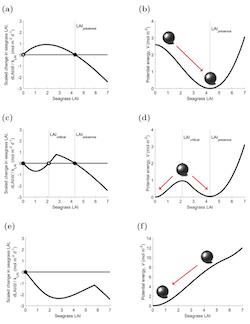ABSTRACT
Feedbacks between seagrass and the local environmental conditions may hinder attempts to restore seagrass by inducing alternative stable states. A one-dimensional physical-biological model was used to identify the conditions under which a feedback between seagrass, sediment and light can yield alternative stable states of seagrass presence and absence (bistability).
Based on our model results, a prediction of whether a given seagrass meadow is large enough to promote seagrass growth can now be made. If the water residence time within the spatial area of the meadow is similar to or greater than the sediment settling time, which is calculated from the ratio of water depth to sediment vertical settling velocity, the meadow is large enough for the feedback to potentially reduce the local suspended sediment concentration.
This has important implications for seagrass restoration: for a proposed restoration plot, if the water residence time is similar to or greater than the sediment settling time, the scale of restoration is large enough for the feedback between seagrass, sediment and light to locally improve water clarity. More generally, this calculation can be used to identify areas where this feedback is likely to generate bistability, and to estimate the minimum suitable meadow size in such locations.







